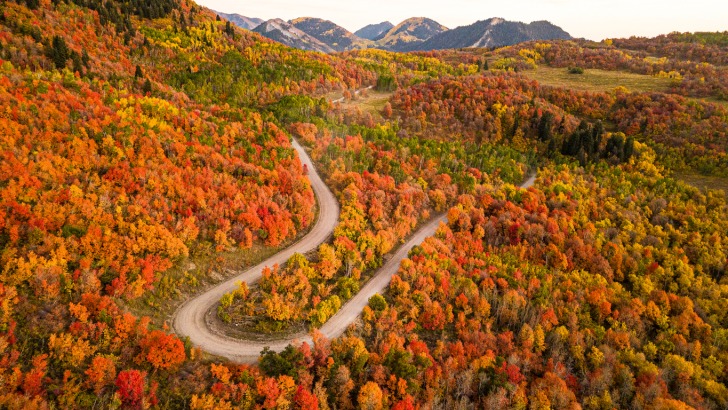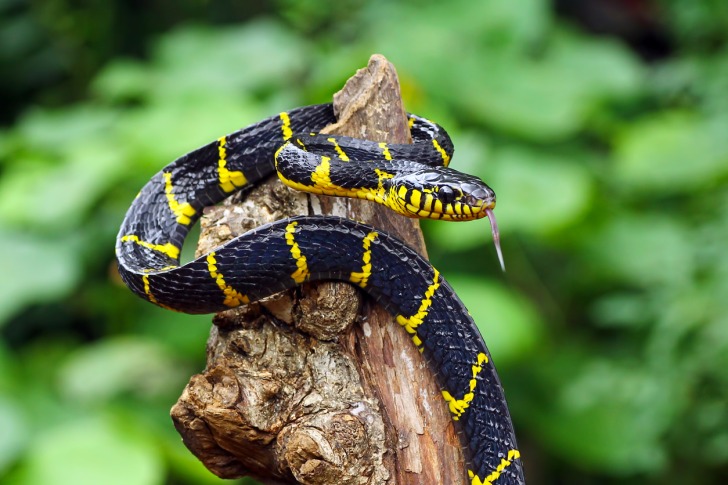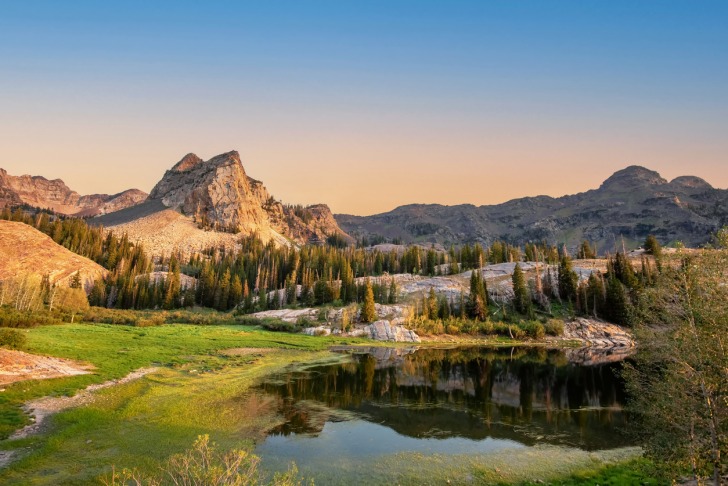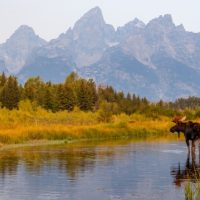Utah is a land of mountains and deserts and has thousands of rocks and rock formations.
This makes it an ideal habitat for snakes.
There are 30 or so species of snakes and about seven species of rattlesnakes in the state.
All the poisonous snakes in Utah are of the rattlesnake variety.
Most snakes are protected, and it is illegal to kill them.

Contents
So… Are There Snakes in Utah?
There are a lot of snakes in Utah, but they are not everywhere.
Snakes are not aggressive and will not come looking for humans.
They will stay out of sight as much as possible.
If you stay on trails you may not ever see one, but when you get out in the wilderness, away from trails, it can get a little more dangerous.
Most snakes in the state are not poisonous.
Snake Species in Utah
There are technically more than 30 species of snakes in Utah, and seven of them are poisonous rattlesnakes.
Some of those species can be combined.
The biggest separation is between poisonous and non-poisonous.
Rattlesnakes
All the poisonous snakes in Utah are rattlesnakes.
The Great Basin Rattlesnakes can be gray, brown, or olive.
They have dark brown markings.
They can get to four feet long and blend into their surroundings well.
They will know you are there before you know they are there.
Sidewinders have unique heads that look like horns.
What gives them their name, is the way they move on the ground.
They tend to move sideways instead of straight.
They like the desert and live in the sand.
Midget faded rattlesnakes are less than three feet long, but are one of the most dangerous snakes in the state.
They are yellow, two, or brown, and their skin looks faded.
They will avoid you as much as possible.
The Mojave Green Rattlesnake is found in the southwest corner of the state.
It has a high level of venom that can be delivered even after it is dead.
Its venom is slow-acting, so you won’t feel its effects for a while after being bitten.
The Prairie Rattlesnake can get to four feet long.
It has a light brown coloring.
This snake is nocturnal, and hardly ever comes out in the daylight, so it is unlikely you would ever see one.
Hopi Rattlesnakes look like prairie rattlesnakes but are smaller, being no more than two feet long.
It is also a nighttime snake.
This is a snake that will flee from you if given a chance.
The Southwest Speckled Rattlesnake is white or gray with black markings.
It gets to only about two feet long.
It likes to hide in rocks and can often be seen during the day.
Non-venomous snakes
The Northern Rubber Boa constricts its prey but is harmless to humans.
They are glossy gray or olive, and they look like a wet piece of rubber.
These snakes are docile and can get to three feet long.
Garter snakes are common everywhere, including in Utah.
The Western Terrestrial Garter Snake is the most common here.
They are tan or brown and blend into the rocks where they live easily.
Desert Night Snake, as its name implies, lives in the desert and comes out only at night.
It is found in the Red Cliffs Desert area.
They are two feet long, and either dark gray or brown.
They are mildly venomous but harmless to humans.
There are a few species of gopher snakes.
They can get up to eight feet long but usually are six feet long.
They are light gray with dark brown or gray markings and can climb trees and live just about anywhere.
The Sonoran Lyre Snake is relatively small at three feet long.
They are gray or brown to blend into their rocky surroundings.
They can make noises similar to rattlesnakes to scare off predators.
The Western Milk Snake is one of a few varieties of milk snakes in Utah.
They have bright coloring and look a lot like a poisonous coral snake, but the milk snake is harmless.

Is it Safe to Go on a Trek in Utah?
Some of the best hiking anywhere in the world is in the southern part of the state in the national parks, such as Arches or Zion National Park.
Trails are well-marked and kept clean.
There are snakes and other creatures around the state and caution should be exercised.
Even so, if you stay on the trails and pay attention to where you are stepping, you should not have any problems with snakes.
Interesting Snake Facts in Utah
The Northern Rubber Boa is a very calm snake that is easy to handle.
This snake is often used for people who are trying to overcome their fear of snakes.
The Western Milk Snake looks a lot like the poisonous coral snake, but it is harmless.
They can also act like a rattlesnake when threatened.
They get their name from often being found around barns on farms.
About a third of those bites happen to hobbyists or researchers in labs, making bites in the wild even rarer.
3 Safety Tips for Exploring Nature in Utah
- Watch your step. Most snakes will get out of your way if they can, and they usually stay off trails. Watch where you step, and don’t step on a twig or what looks like a stick on the ground unless you are sure it’s a stick. There are snakes around, but usually, the only people who have problems are people who have stepped on a snake.
- Stay on the trail. Snakes very rarely get on trails. They can feel your presence long before you see them, and they will get out of the way. If you stay on the trail you will not likely see a snake. If you do have to get off the trail, step carefully and don’t put your hand where you cannot see.
- Learn the sound of a rattler from a rattlesnake. All the poisonous snakes in Utah are rattlesnakes and will warn you before striking. If you hear one, get away from it as fast as you can.
Summary
There are a lot of snakes in Utah, as the rocky surfaces make a natural habitat for them.
Most of the time you won’t see them, and they will try to stay out of your way.
Just watch where you step and pay attention to what is going on, and you won’t have any problems.
Utah Safety Overview
READ THE FULL REPORT: Utah Safety Review
Safety Index:
- OVERALL RISK: LOW
- TRANSPORT & TAXIS RISK: LOW
- PICKPOCKETS RISK: LOW
- NATURAL DISASTERS RISK: MEDIUM
- MUGGING RISK: LOW
- TERRORISM RISK: LOW
- SCAMS RISK: MEDIUM
- WOMEN TRAVELERS RISK: LOW
Frequently Asked Questions
How many people are killed by snake bites?
Across the nation, about five people are killed each year by being bitten by a snake.
Death is very rare then.
In the last 91 years of record-keeping, there has been only one documented death from a snakebite in Utah, and that happened in 1961.
How many snake bites are there in Utah?
Despite having quite a few rattlesnakes, only about 20 snakebites require medical attention each year in the state.
What should you do if you get bitten by a rattlesnake?
First, get away from the snake.
Keep the wound below your heart level.
Call emergency services, or get the person to medical help as soon as possible.
Wash the area with soap and water.
Remove clothing or jewelry that could impede swelling.











